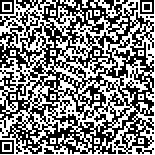下载中心
优秀审稿专家
优秀论文
相关链接
摘要

采用修正的张氏雪深反演算法,用SSM/I37GHz和19GHz水平极化亮温值计算了青藏高原及其毗邻地区的积雪深度,对其精度进行了评价,并对误差来源进行了分析,结果显示,此算法能够较好地反映研究区的雪深分布,但局部地区误差较大,总体上雪深被高估,其误差主要来源于冻土,深霜层,植被以及雪层中液态水含量,雪粒的形状和粒径的变化带来的影响,SSM/I数据较低的分辨率和研究区复杂的地形使反演的雪深与观测的雪深缺少可比性,给精度的评价带来影响。
Snow cover extension and snow depth information may be useful indicators of regional and global climate change and of basin_scale water storage in mountainous areas as well as snow disaster monitoring, forecasting and the loss assessment in pastoral areas. Thus, it is important to ensure that they are accurate and as free as possible of any known biases. Though it is practical to get snow extension from the visible and infrared remotely sensed data such as NOAA_AVHRR, TM and the like, it is nearly impossible to get snow depth information from such data set. Passive microwave remotely sensed data such as SMMR and SSM/I make it possible to derive snow depth in a large_scale area. Some algorithms have been developed to retrieve the snow depth from SMMR and SSM/I data, but those algorithms didn't perform well in many studies. In this paper, using a revised Chang's algorithm and SSM/I 37GHz and 19GHz horizontally polarized brightness temperature, we retrieved the snow depth distribution in Qinghai_Xizang (Tibet) plateau, assessed the results' accuracy, and analyzed their error sources. It showed that the revised Chang's algorithm described the general trend of snow depth of this area, in spite of overestimation in whole and large errors in local areas. The errors are mainly from the effects of the existence of frozen ground, depth_hoar, vegetation cover and the lacking of considering the effects of the liquid water content of snow and the changing of shape and grain size of snow. The coarse spatial resolution of SSM/I remotely sensed data makes the retrieved snow depth hard to compare with the ones from ground observation, thus, makes it difficult to evaluate the accuracy. Some suggestions for further investigation were put forward at last.

